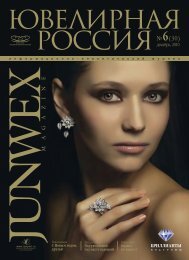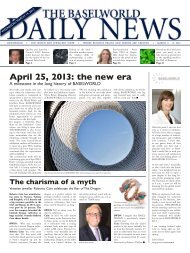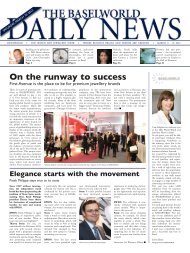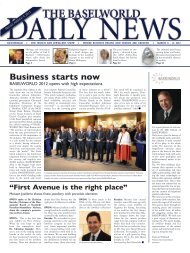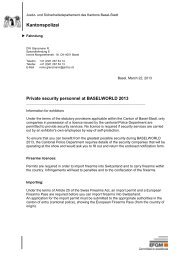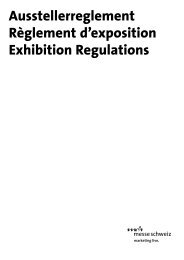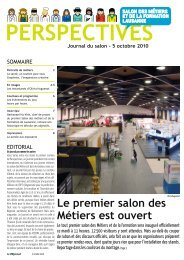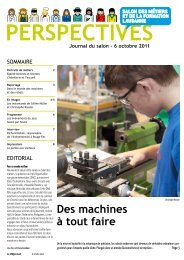MASTER MECHANICS
MASTER MECHANICS
MASTER MECHANICS
Create successful ePaper yourself
Turn your PDF publications into a flip-book with our unique Google optimized e-Paper software.
62 CASE STUDY europa star<br />
CASE STUDY is a regular new column in Europa Star that will appear in each of our issues. Its objective:<br />
a quick analysis of the singular strategies put into operation either globally by a brand or exceptionally for a<br />
particular launch. Our first CASE STUDY takes a look at the MB&F brand.<br />
RPierre Maillard<br />
I<br />
In the landscape of independent brands,<br />
MB&F—for Max Büsser & Friends—has<br />
occupied a very particular niche for the last<br />
five years. More than any other watchmaking<br />
start-up (a term that Max Büsser will immediately<br />
refute), MB&F is setting out on an original<br />
path that seeks to give mechanical watchmaking<br />
a radically new stylistic dimension.<br />
How could we define it more precisely? From<br />
one model to another, each is different and yet<br />
each is immediately recognizable from the touch<br />
of a certain creative hand. Between the first<br />
Horological Machine (the HM1 in the shape of<br />
a large eight) and more recently the HM4<br />
Thunderbolt (that takes the form of a stealth<br />
bomber), while passing by the HM2 (a large<br />
sapphire table) and the HM3 (with its two protuberances<br />
that are transformed into the eyes of<br />
a frog in the HM3 Frog version) or the jewellery<br />
delight of the recent Jwlrymachine created with<br />
Boucheron, the forms, functions, appearance<br />
and the feeling that emanate from each of these<br />
timepieces are each quite particular.<br />
The great strength of these Horological<br />
Machines (developed by Max Büsser who, as<br />
we recall is the creator of the concept for the<br />
Opus series for the Harry Winston Rare<br />
Timepieces,which he directed for seven years) is<br />
that they totally escape from the contingencies<br />
of the dominant trends by proposing ‘bachelor<br />
machines’ that are stylistically autonomous,<br />
freed from the confines of current aesthetics—<br />
a little like something made by a single artist.<br />
The art practiced by Max Büsser, however, is<br />
more like that of an orchestra leader.<br />
The other remarkable particularity of Büsser’s<br />
HM4 THUNDERBOLT<br />
MB&F, the strategy of bachelor machines<br />
global concept is to have excluded, from the<br />
beginning, all vague desires for verticalization<br />
or for becoming a manufacture. Rather, he<br />
chose to work in total transparency with only<br />
a large circle of ‘Friends’. These Friends are<br />
external creative collaborators and include,<br />
among others, the designer Eric Giroud (the<br />
loyal first violin) as well as high-level suppliers<br />
such as Agenhor and Les Artisans Horlogers,<br />
which are the subjects of portraits in the<br />
article, Master Mechanics, in this issue. This is<br />
another way of demonstrating that he is the<br />
‘son’ of no man but the friend of many—a<br />
form of declaration of independence and of<br />
difference that is inscribed even in the name<br />
of the brand itself.<br />
A huge buzz and organized rarity<br />
The third particularity of this veritable concept<br />
company is the detailed promotional organization<br />
that began with the founding of MB&F



